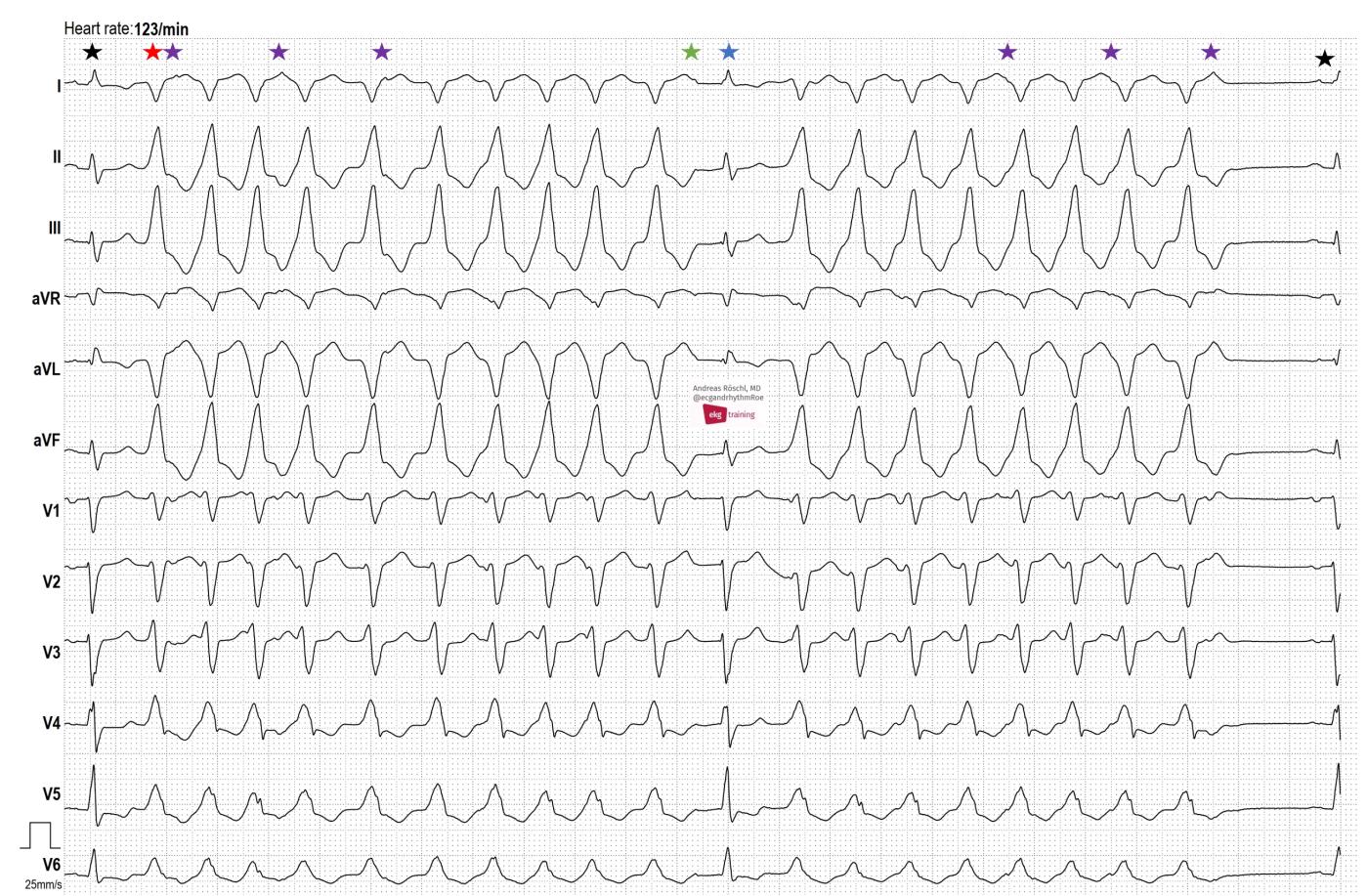Broad complex tachycardia in a 78-year-old patient with coronary heart disease (CHD) and an old inferior myocardial infarction. Why is this a ventricular tachycardia (VT) and not a supraventricular tachycardia (SVT) with aberrant conduction? Broad complex tachycardia is generally about 80% likely to be ventricular in origin. However, in a patient with CHD and a history of myocardial infarction, this likelihood increases to about 90%. What other clues are there? The tachycardia initiates with a premature QRS complex without a preceding/premature P-wave. The QRS complexes are very wide (almost 200 ms - red asterisk), which strongly argues against an SVT with aberrant conduction. There is AV dissociation (more QRS complexes than P-waves, some P-waves are marked with a purple asterisk). We have a capture beat (blue asterisk). The first and last beats in the ECG are sinus node beats (black asterisk). So there is no doubt about the ventricular origin of this broad complex tachycardia.
-

- Dr A Röschl's blog
- Log in or register to post comments
All our content is FREE & COPYRIGHT FREE for non-commercial use
Please be courteous and leave any watermark or author attribution on content you reproduce.


